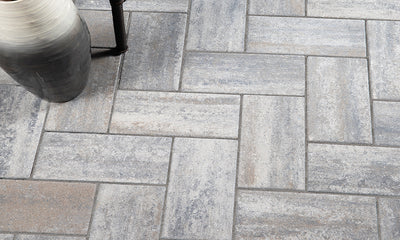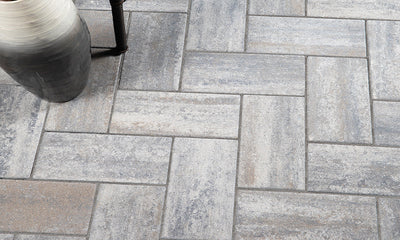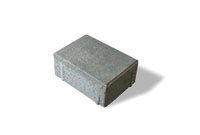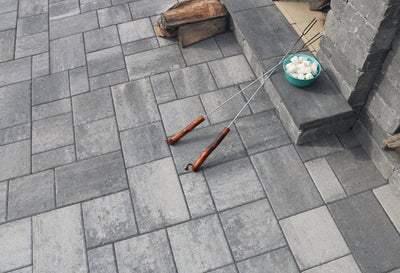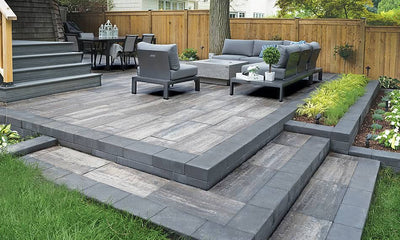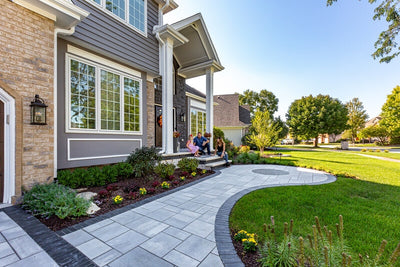
What You Need to Know About Retaining Walls for Your Ottawa Property
Jonathan Perrette
Retaining walls are structures that can drastically improve the functionality and look of your outdoors. Whether you're dealing with sloping land or aiming to add visual interest to your backyard, a well-constructed retaining wall can make a big difference. Today, we will go over what retaining walls are, why they’re important, and how Canlok Stone’s products can help you build the perfect wall for your property.
What is a Retaining Wall?
A retaining wall is a structural element designed to hold back soil, rock, or other materials to manage changes in ground elevation. Unlike traditional garden walls, retaining walls are usually built for functional purposes and for the most part, exceed 2 feet in height. These walls play a critical role in leveling uneven terrain, creating terraces on slopes, and providing stable foundations for raised patios or pool decks.
Retaining walls also offer the benefit of utilizing extra unused space on your property by transforming complex landscapes into level areas for outdoor living. They’re ideal for creating decorative garden beds, play areas, or even outdoor entertainment spaces, giving you more room to enjoy your home.
 Engineering in Retaining Walls
Engineering in Retaining Walls
Building a retaining wall isn’t just about stacking stones. If the wall exceeds 2 feet in height, it’s important to consult with a qualified engineer. Without proper engineering, your wall could suffer from structural issues such as bulging, cracking, or leaning. In extreme cases, a poorly designed wall could collapse, leading to expensive damage.
A well-engineered retaining wall addresses 3 main things:
-
Structural Support: The wall needs to be strong enough to withstand the pressure from the retained soil or materials.
-
Drainage: Water buildup behind the wall can be dangerous, so it's important to incorporate proper drainage measures, such as a gravel base and drainage pipe, to make sure water flows freely and doesn’t compromise the wall’s structure.
-
Erosion Control: Compacting the soil and using materials like geogrids can prevent washouts and soil movement, weakening the wall's stability over time.
How Retaining Walls Can Increase Usable Space
One of the primary benefits of retaining walls is their ability to transform sloped or uneven terrain into flat, usable areas. Canlok Stone’s retaining wall systems are ideal for creating terraced gardens, elevated patios, or even multi-level outdoor spaces. This can add both functionality and visual appeal to your property.
For instance, a retaining wall can create distinct zones in your yard, separating areas for gardening, lounging, or dining. Low walls can even double as built-in seating, perfect for patios, fire pits, or other outdoor gatherings.
Design Considerations
-
Know the purpose: Understand the wall's purpose to guide your design, making sure it fits seamlessly and functions within the space.
-
Use the right material: Choose materials that go well with your home’s style. This could be stone for a natural look or concrete for a modern look.
-
Consider scale: Match the wall's height to your landscape. Taller walls need extra stability, while smaller ones add subtle structure.
-
Play with shape: Curves and angles can soften the wall’s appearance and make it blend better with the landscape.
-
Use texture and colour: Different textures and colours can set the tone, from sleek and modern to rustic and earthy.
-
Add plants: Incorporate greenery like vines or flowers to soften hard lines and enhance the wall’s look.
Whether you're looking to level out your backyard or add some visual interest, a retaining wall is an excellent option for improving your outdoor space. Ready to get started? Contact us today to learn more about how we can help you build the perfect retaining wall for your Ottawa landscaping project.
FAQs
How do I know if I need a retaining wall?
If your yard has significant slope or erosion problems, a retaining wall may be a great solution. It's also worth considering if you want to level sections of your yard for landscaping or functional areas.
How do I maintain my retaining wall?
Regular maintenance includes checking for cracks or settling, ensuring proper drainage, and cleaning the surface. Material-specific care, like sealing stone or repairing mortar, may also be needed over time.
How tall can a retaining wall be?
The height of a retaining wall depends on its purpose and local building codes. For taller walls, extra reinforcement is usually required to prevent shifting or damage.
What is the purpose of a retaining wall in landscaping?
A retaining wall helps prevent soil erosion, creates level spaces on sloped ground, and adds visual interest by defining areas like gardens or patios.
Can a retaining wall be used to create multiple levels in my yard?
Yes! Retaining walls are perfect for terracing sloped yards and creating multiple levels, which can be great for gardening or adding dimension to your landscape.




